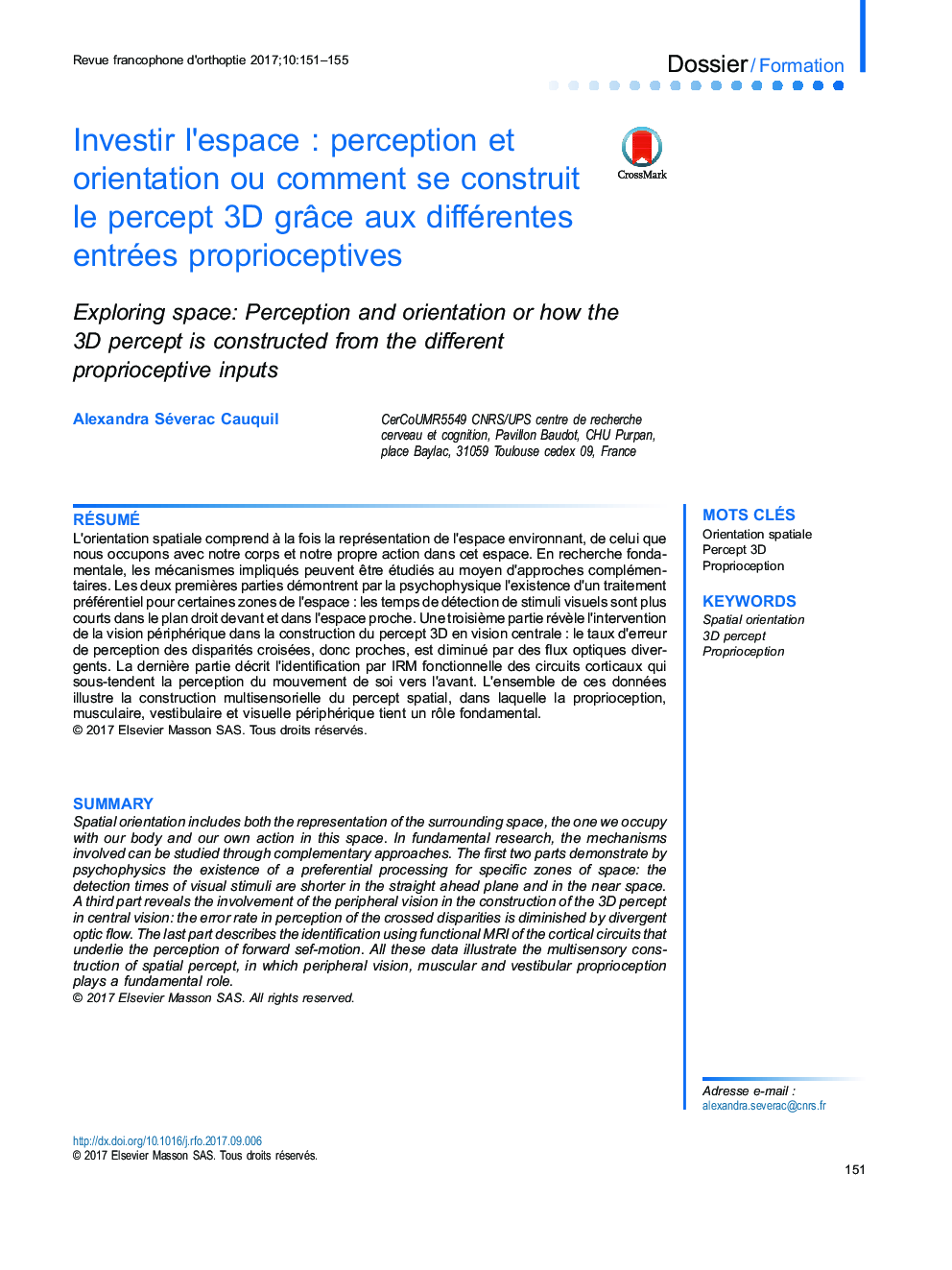| Article ID | Journal | Published Year | Pages | File Type |
|---|---|---|---|---|
| 8591588 | Revue Francophone d'Orthoptie | 2017 | 5 Pages |
Abstract
Spatial orientation includes both the representation of the surrounding space, the one we occupy with our body and our own action in this space. In fundamental research, the mechanisms involved can be studied through complementary approaches. The first two parts demonstrate by psychophysics the existence of a preferential processing for specific zones of space: the detection times of visual stimuli are shorter in the straight ahead plane and in the near space. A third part reveals the involvement of the peripheral vision in the construction of the 3D percept in central vision: the error rate in perception of the crossed disparities is diminished by divergent optic flow. The last part describes the identification using functional MRI of the cortical circuits that underlie the perception of forward sef-motion. All these data illustrate the multisensory construction of spatial percept, in which peripheral vision, muscular and vestibular proprioception plays a fundamental role.
Related Topics
Health Sciences
Medicine and Dentistry
Ophthalmology
Authors
Alexandra Séverac Cauquil,
